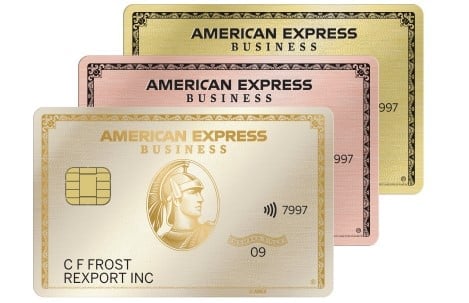Loan Glossary: Financing Terms Business Owners Should Know
Financing terms like cash flow, APR and loan default are important for any small-business owner to know.

Many, or all, of the products featured on this page are from our advertising partners who compensate us when you take certain actions on our website or click to take an action on their website. However, this does not influence our evaluations. Our opinions are our own. Here is a list of our partners and here's how we make money.
Whether you’re an entrepreneur looking for startup capital or an experienced small-business owner and operator, there are a few small-business financing terms you’re bound to hear on a regular basis. Even if you’re not actively applying for a small-business loan, it’s beneficial to be proactive in understanding some of these terms.
Annual percentage rate
The annual percentage rate (APR) helps you understand the true cost of a loan. It reflects a lender’s interest rate plus all fees and extra costs associated with a loan, annualized and rolled into a percentage rate. When deciding between different loan offers, small-business owners can use APR to compare how much each loan will really cost.
Asset
Assets in business are items — tangible or intangible — that hold value for a company. Tangible assets are things like cash reserves, real estate property, inventory or equipment. Intangible assets may include trademarks, employee expertise or even a strong customer base. Tangible assets can typically be used as collateral to secure a business loan.
How much do you need?
We’ll start with a brief questionnaire to better understand the unique needs of your business.
Once we uncover your personalized matches, our team will consult you on the process moving forward.
Cash flow
Cash flow refers to the money “flowing” in and out of your business. Net cash flow is the money you have left over after you subtract the money your business has spent (rent, inventory purchases, debt payments, etc.) from the money it has earned (operational income, investment income, funding, etc.).
Cash flow formula
Ideally, your business will have positive cash flow, meaning you have more coming in than going out. When applying for financing, you may manually create a cash flow statement, or use accounting software; however, a lender will likely do its own cash flow analysis as well.
Collateral
Collateral is typically a valuable asset that’s used to secure your business loan. If you’re unable to repay your loan, a lender can recover some of the money it loaned by liquidating the assets you’ve pledged. Collateral is considered a risk mitigant and can improve your chances of getting approved or lead to more favorable rates and terms. Things like real estate, cash deposits or equipment can be used to secure a loan.
Debt financing
Debt financing is any method of financing that involves taking on debt, or lump sums of money that your business has to repay. Term loans, SBA loans and lines of credit are all included in this type of financing.
The cost of debt financing can vary depending on what type of loan you get and who the lender is. Bank term loans, for example, are among the most affordable types of debt but usually require good personal credit and at least two years in business. Lines of credit or even term loans from online lenders can have much higher interest rates but may approve borrowers with poor personal credit or startup businesses.
Debt service coverage ratio (DSCR)
Debt service coverage ratio (DSCR) is a measure of your business’s cash flow against your current debt obligations. It gives your lender an idea of how much additional debt you can take on. It’s calculated by dividing your net operating income by your business’s total amount of debt payments.
Debt service coverage ratio formula
For example, if your net operating income is $500,000 and your total amount of debt is $200,000, your DSCR would be 2.5. That means your business has two and a half times the amount of cash it needs to cover its current debt obligations.
Lenders usually use DSCR as an indicator of loan risk — businesses with lower DSCR are considered riskier than those with higher DSCR. A DSCR of 1 essentially means your business is breaking even, while anything below 1 means your business doesn’t have enough cash to cover your debts.
» MORE: DSCR loan calculator
Default
A loan is considered to be in default when you repeatedly violate the terms of your specific loan agreement, which means that the exact definition of loan default varies by lender and loan. If you make a late payment, for example, your loan may be considered delinquent for the amount of time that your payment is past due, and you may be subject to late fees. However, if you still haven’t made the payment after a certain period — usually 30 to 90 days — your lender may report it to a credit bureau.
Draw fee
Draw fees are associated with business lines of credit. You may be subject to a draw fee each time you use your approved credit line.
Equity
Equity represents the value of a company and is calculated by subtracting that company’s liabilities from its assets.
Equity also refers to ownership in a company, represented as a percentage or as a number of shares. In smaller, private companies, equity is normally held by the owners, investors or employees, whereas larger, publicly traded companies distribute equity on the stock market.
Equity financing
An alternative to debt financing, equity financing is a method of financing whereby a business owner trades equity, or shares of business ownership, for funding. Venture capital, angel investors and crowdfunding are all methods of equity financing.
Equity financing is best for high-potential startups that will likely experience fast growth. If you don’t get enough money to support your business’s growth, you may end up with a funding gap, or lose ownership in your company.
»MORE: Debt vs. equity financing
Inactivity fee
Like a draw fee, an inactivity fee typically accompanies a business credit line. If you don’t use your credit line at all within a certain time period, your lender may charge you an inactivity fee.
Interest
Interest is calculated as a percentage of the principal amount borrowed. Your loan agreement should detail both your interest rate and the total amount of interest you will pay on the loan based on the loan amount.
Liability
Put simply, liability refers to the money that a business owes. Examples of a business’s liabilities include outstanding loans, accounts payable and accrued expenses.
Lien
A lien is a legal right to any collateral you have pledged for your business loan. Your lender, or lien holder, may file a lien in your business’s name on the piece of collateral you pledged, which allows it to seize that collateral if you default on the loan.
Most business lenders file a Uniform Commercial Code lien, which is specifically used for business transactions and gives the lien holder first priority over other creditors that may have filed liens.
Loan agreement
A loan agreement is a legal contract between you and your lender when you take out financing. It should document your total cost of borrowing, how long it will take you to pay off the loan, your payment schedule and more.
Loan amortization
Loan amortization is the process of scheduling equal-sized payments that gradually pay down your loan. A portion of each loan payment you make goes toward your loan’s interest, while the other portion goes toward the principal balance. Typically, payments are structured so that at the beginning of your loan’s term, a larger portion of your payments is going toward interest. This ensures that lenders get paid first, and it also means that you aren’t significantly reducing the amount that you owe until later in the life of your loan.
When your loan closes, you may request a loan amortization schedule, which should tell you how your loan payments are broken down over the life of your loan.
Maturity date
Your business loan’s maturity date is the date your final loan repayment is due and therefore reflects the date that your loan will be paid off entirely. Working backward from the maturity date to the date of your first payment will also tell you the term of your loan.
Origination fee
An origination fee is an upfront fee that a lender may charge to cover the costs associated with originating, or initiating, your loan. It can include things like underwriting costs or closing costs and is usually charged as a percentage of your principal amount.
Prepayment penalty
If you repay your loan before its maturity date, a lender may charge a prepayment penalty to recover some of the lost interest income. A lender should be transparent about any prepayment penalty fees. If you don’t see it mentioned in your business loan agreement, it’s prudent to ask before making additional payments.
Prime rate
The prime rate is a base interest rate determined by commercial banks. It represents the lowest rate they would charge their most creditworthy customers. Any interest rate you’re given will build off of the prime rate and other factors about your creditworthiness.
Principal
A loan’s principal amount is the amount of money you will receive from the lender up front when you take out a loan. It does not include the interest that you will owe on the loan.
For example, if you get a $100,000 loan with a 6% interest rate, your principal amount is $100,000 and your total interest would be $6,000 (6% of $100,000). The total amount of interest will be broken up over the term of your loan, just like the principal amount; however, most loans are structured so that the interest gets paid first, meaning you don’t start paying down your principal balance right away.
Refinance
To refinance is to repay an existing loan with a new one to get a better interest rate or other terms. For example, a small-business owner with a $300,000 loan at 10% APR might want to refinance into a new loan with an APR of 6%, to save on interest.
You should also weigh the numerous fees usually associated with refinancing to see whether the interest savings are still worth it. Since terms and rates vary by lender, always shop around for the best deal.





